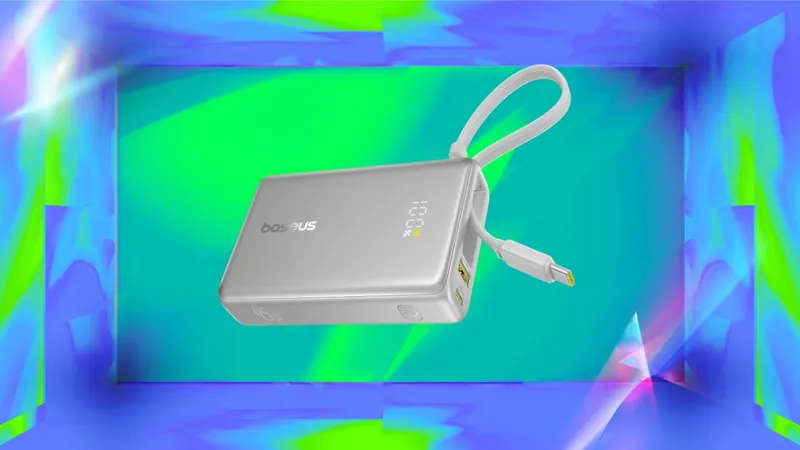
The Shocking Dangers of Staring at the Sun During the March 29 Solar Eclipse: What You Need to Know!
2025-03-28
Author: Li
Tomorrow, on March 29, a magnificent celestial event awaits enthusiasts in the Northern Hemisphere, with viewers in 13 northeastern U.S. states poised to witness a breathtaking partial solar eclipse. This occurrence is a result of the moon sliding between the sun and Earth, casting a shadow that gives the sun the appearance of having a bite taken out of it.
However, as tempting as it may be to gaze at this phenomenon, doing so without proper eye protection can lead to severe eye damage, specifically a condition known as solar retinopathy. This alarming ailment can inflict permanent vision loss, all while you may be completely unaware it’s happening!
What is Solar Retinopathy?
Solar retinopathy occurs when intense sunlight injures the delicate tissue in the retina, the part of your eye responsible for converting light into images. Surprisingly, this condition can be triggered not just by sunlight but also by other intense light sources like lasers or the bright arc from a welding torch. Victims can sustain damage in mere seconds, with both eyes often affected.
Dr. Julie Rosenthal, a clinical assistant professor of ophthalmology at the University of Michigan, warns that individuals are especially susceptible to solar retinopathy during eclipses, as the partial dimming can mask the sun's brightness, which normally triggers protective reflex responses in our eyes.
In bright conditions, our eyes instinctively squint and the pupils constrict to reduce light intake. Conversely, during an eclipse, pupils dilate, allowing for increased light exposure that can harm the retina.
Don’t Ignore the Symptoms!
Symptoms of solar retinopathy typically are not immediate. Those impacted may experience blurred vision with a central dark spot, distorted perception of straight lines, or even changes in color vision. Once the damage occurs, it may take hours or days for symptoms to surface, including headaches and discomfort.
If you find yourself staring at the sun during the eclipse, remember that there are no pain receptors in the retina, which means you won't feel the damage until it's too late. The more you stare, the greater the risk!
Is There a Cure?
Currently, there is no definitive treatment for solar retinopathy. While some patients may notice improvement in the first six months post-injury, many will continue to experience lingering effects such as permanent dark spots or wavy lines in their vision. In severe cases, an irreparable retina can result in lasting vision loss.
Protect Your Eyes During the Eclipse!
To ensure your eyes remain safe, it is crucial to avoid directly looking at the sun. If you're eager to witness the partial solar eclipse on March 29, equip yourself with solar eclipse glasses that meet the ISO 12312-2 international safety standard, or use solar filters on telescopes, binoculars, or cameras.
For those without access to protective gear, consider enjoying the event from the comfort of your home by watching a live broadcast of the solar eclipse online.
“A spectacular celestial event can be safely enjoyed by all if you just take the necessary precautions,” emphasizes Dr. Rosenthal.


 Brasil (PT)
Brasil (PT)
 Canada (EN)
Canada (EN)
 Chile (ES)
Chile (ES)
 Česko (CS)
Česko (CS)
 대한민국 (KO)
대한민국 (KO)
 España (ES)
España (ES)
 France (FR)
France (FR)
 Hong Kong (EN)
Hong Kong (EN)
 Italia (IT)
Italia (IT)
 日本 (JA)
日本 (JA)
 Magyarország (HU)
Magyarország (HU)
 Norge (NO)
Norge (NO)
 Polska (PL)
Polska (PL)
 Schweiz (DE)
Schweiz (DE)
 Singapore (EN)
Singapore (EN)
 Sverige (SV)
Sverige (SV)
 Suomi (FI)
Suomi (FI)
 Türkiye (TR)
Türkiye (TR)
 الإمارات العربية المتحدة (AR)
الإمارات العربية المتحدة (AR)